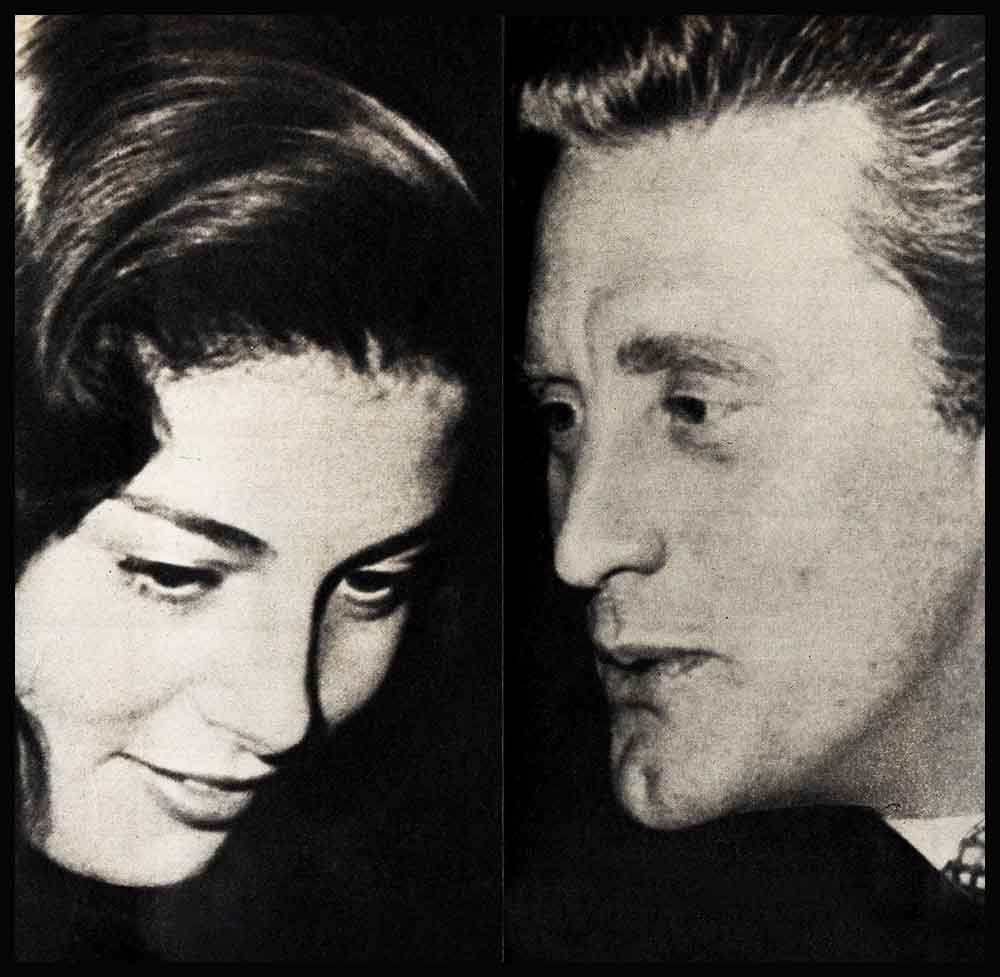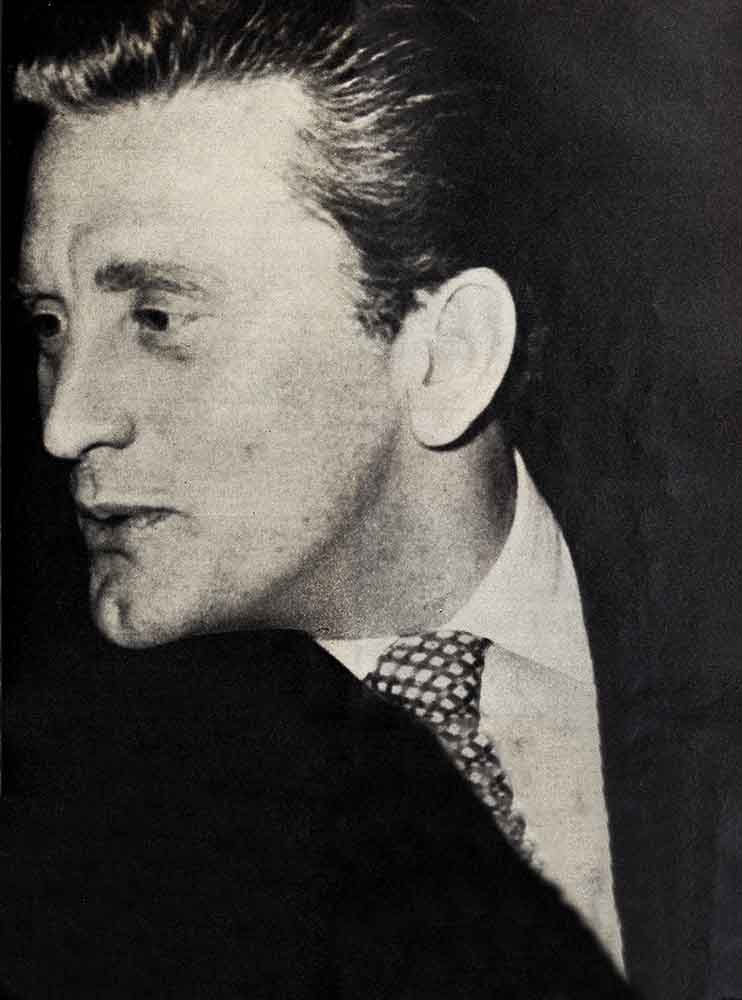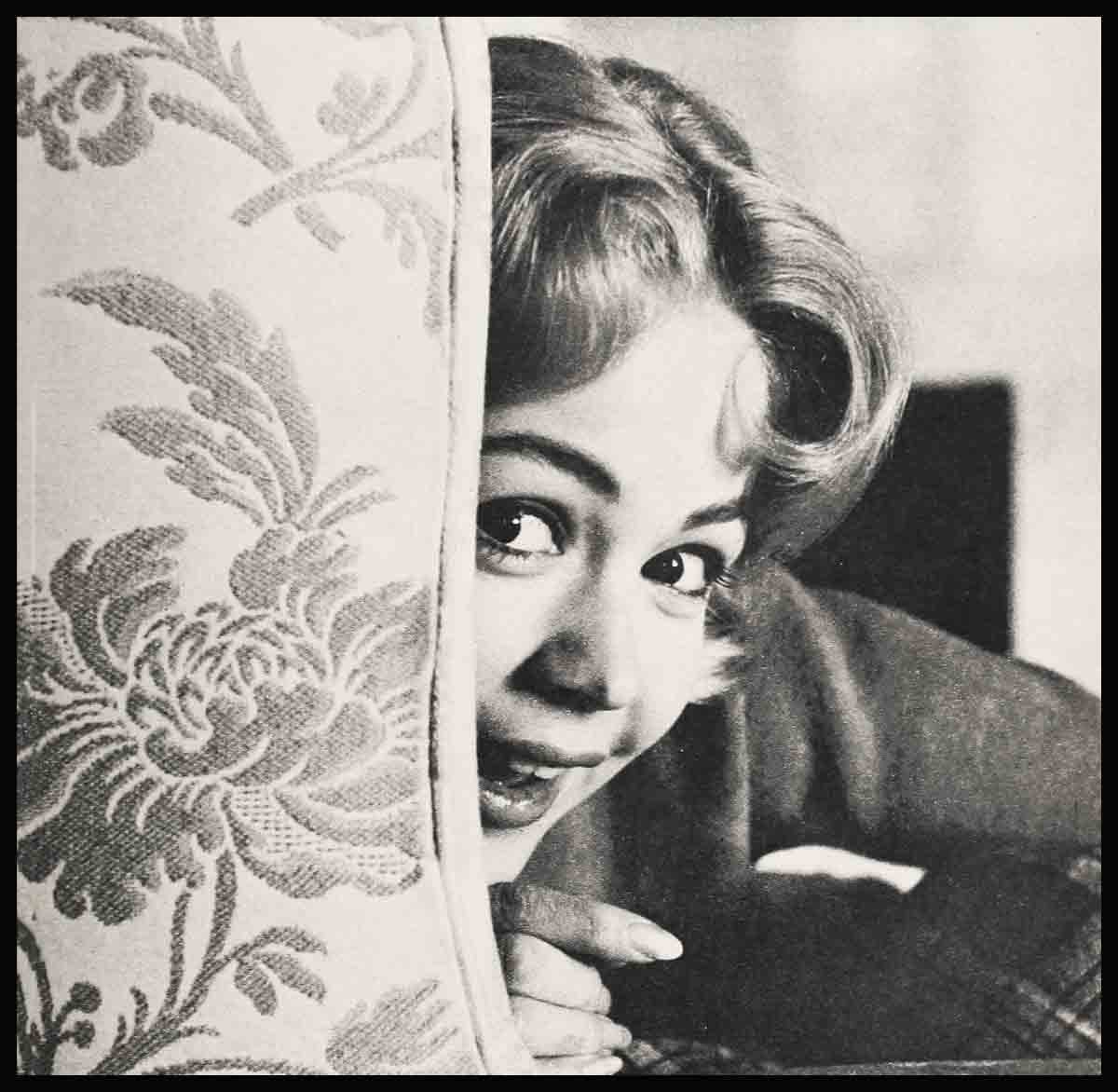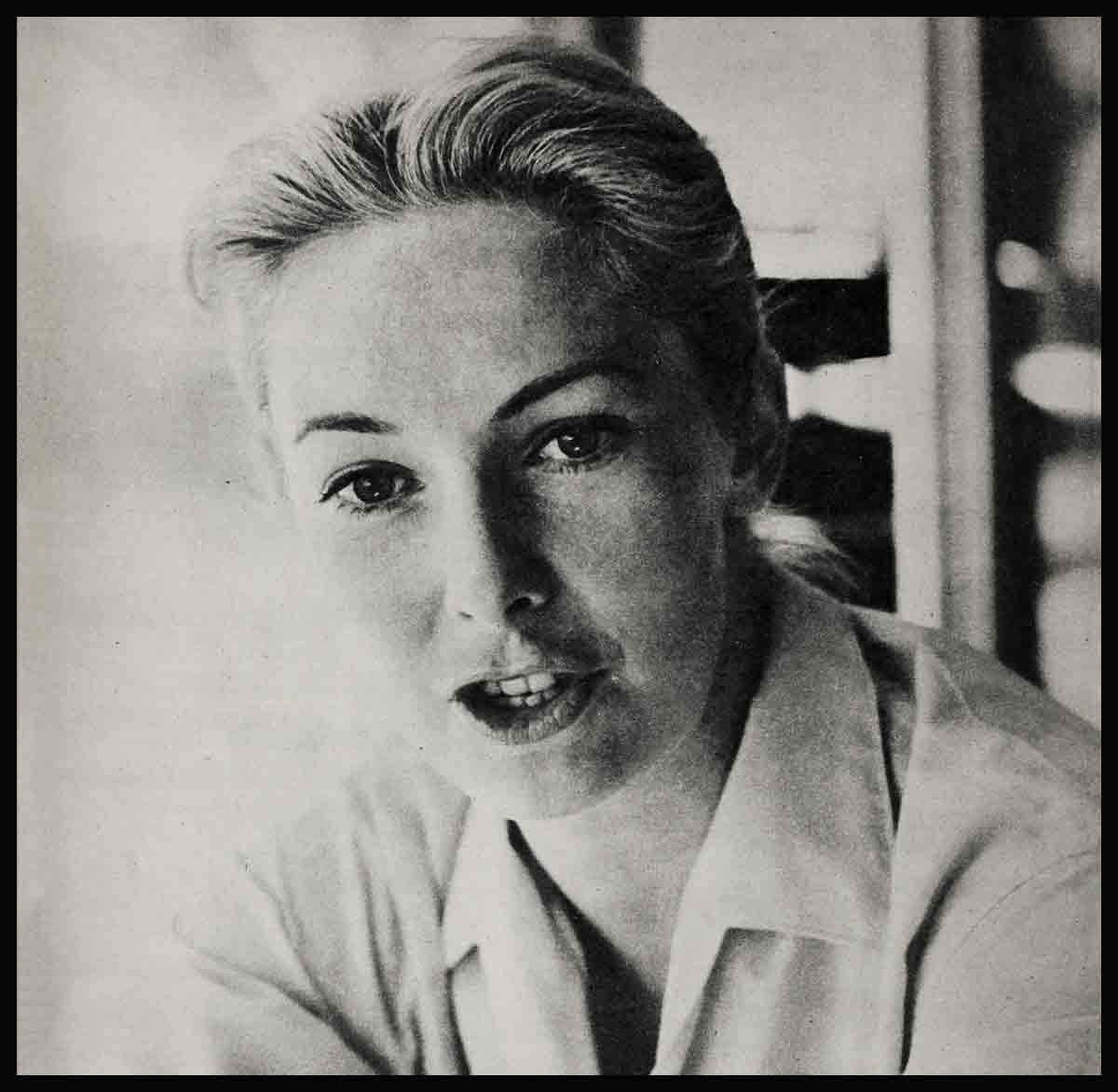
Is It Really Love?
Twenty-year-old Pier Angeli and thirty-six-year-old Kirk Douglas make the unlikeliest twosome in Hollywood since Greta Garbo dated Leopold Stokowski. It is not the difference in their ages; a sixteen-year split is not too unusual, but the thing that is widening the eyes of Hollywood’s citizens is the difference in their types. It is as though Ann Blyth, five years ago, had suddenly taken to holding hands with man-about-town Greg Bautzer.
Their backgrounds are different. Kirk once worked in Schrafft’s in New York; and Pier was once Anna Maria Pierangeli, who was born in Pisaro, Italy, and later studied art in Rome. But this is of little consequence. The point is that since her arrival in Hollywood two years ago, Pier Angeli, the ethereal child with the dovelike eyes, has been chaperoned by her mother to the point of exasperation. Signora Pierangeli brought with her from Italy not only her twin daughters but also the ironclad custom of her native country that until a girl is twenty-one she does not, under any circumstances, go out with a man unless her mother, or some other proper relative, accompanies her. Pier and her sister Marisa Pavan were seventeen when they first saw Hollywood, and such a likely looking brace of femininity that the younger boys in town immediately began clamoring for their phone number. At first the girls made many dates, innocent evenings planned for movies or wienie roasts, but the invitations soon subsided into nothingness. The average American male is smitten with astonishment, disbelief and then final discouragement when he finds that in order to spend an evening with the girl of his choice, he must also squire her mother.
The experience has been no comedy for either Pier or Marisa. Rapidly absorbing American customs, they saw the futility of the chaperonage and pleaded with their mother to be more lenient. They pointed out to her that at this rate they would never be married, at least not to an American. But Mrs. Pierangeli was adamant.
Kirk Douglas’ love life has been a horse of a different color. There has been nothing unusual about it—it has been the life of the average American actor—but in contrast to Pier’s experience, there is all the difference between white and black. Kirk was married to Diana Dill, daughter of a wealthy Eastern businessman, and sired two children before the divorce that came in 1950. The breach between them began, according to Kirk, some time before he hit Hollywood, which precludes any accusations that success may have gone to his head. Soon after the divorce, he took up with Irene Wrightsman, another socialite, and the love affair blew hot and cold for more than a year.
Kirk became, after that, quite a ladies’ man. He was never reputed to be the wolf type, but it was obvious that he was playing the lush field that Hollywood offers. He dated a dozen girls, and it was noticed that, with a few exceptions, they became increasingly younger. His ex-wife is approximately the same age as Kirk, Irene Wrightsman is not more than a few years younger. He dated Rita Hayworth during her brief visit to California last year, but in the main his free time was spent with youngsters many years his junior. The selection included a young Pasadena socialite, then, after her divorce from football hero Glenn Davis, Terry Moore, who is barely out of her teens, and Debbie Reynolds, who had just turned twenty.
He met Pier last summer when the two were co-starred in “Equilibrium,” one sequence in M-G-M’s “The Story of Three Loves.” A flame of interest was immediately fanned between them, but with Signora Pierangeli ever on hand, there was little Kirk could do about arranging to spend an evening alone with Pier. It was said around the studio that this was developing into a romance; anybody around the set who had half an eye could see that Pier and Kirk spent a great deal of time together. As usual, Kirk wouldn’t talk. He has always refused to discuss his feelings for any girl.
The news didn’t leak too much around Hollywood until Kirk reported to Columbia Studio for his role in Stanley Kramer’s movie, “The Juggler.” It wasn’t long after that that Pier showed up at Columbia to have lunch with Kirk. They ate in a small Italian restaurant near the studio, and despite the fact that Kirk loathes the romance rumors that spring up every time he dates a girl, he was holding hands with Pier. It was obvious the two were far from bored with each other. A writer who was in the restaurant that day reports that they talked together like young lovers, that their relationship seemed to be “a sweet, young kind of thing. Not at all like Kirk. He was very gallant with her—like a young boy showing off his best girl.”
When they left the restaurant and headed back to the studio, they were standing at the busy corner of Sunset and Gower streets waiting for the traffic signal to change when a car squealed to a stop in front of them. A middle-aged woman climbed out, fumbling nervously in her purse. She brought out an envelope and ran breathlessly in Kirk’s direction. He reached into his pocket for his fountain pen and smiled down at Pier as much as to say, “Here comes a fan. Hold onto your hat.” Reaching Kirk, the woman handed him the envelope. “I’m sorry,” she said, “we haven’t a minute to stop anywhere. Would you be kind enough to drop this in the mailbox across the Street for me?”
Pier’s laughter rang out above the rumble of the traffic and Kirk grinned sheepishly. It was a scene that could have been played between two teenagers; the boy trying to impress his girl and the girl merrily amused at his failure.
Pier spent that entire afternoon watching Kirk rehearse with other members of the cast for Director Edward Dmytryk. One of the actors who was present remarked later that Pier seemed quite attracted to Kirk and that in his opinion it was good for Douglas to have a girl of Pier’s innocence and sweetness pay him so much attention. Asked why, he said, “Such a girl is good for any man’s ego.”
No one knows, but it is probable that as Pier and Kirk sat over their wine and ravioli that noon in the Naples restaurant, they discussed plans to see each other again. At the time, Pier was finishing her picture, “Sombrero,” at M-G-M, and Kirk knew that within a few weeks he would be leaving Hollywood for Israel, where the majority of “The Juggler” was to be filmed. Following that picture’s completion he was slated to do “The Girl on the Via Flaminia” for Anatole Litvak, a film that was also to be made on the other side of the Atlantic Ocean. It meant that he would be away from Hollywood for a long time.
Coincidentally, Pier was also planning a trip across the sea. Early in 1952, she had gone to Italy to make “The Devil Makes Three” with Gene Kelly, and at that time had visited her many relatives in Rome. Now she was planning to go back once more, ostensibly to visit her relatives, although only a few short months had passed since she had last seen them. Pier is tremendously fond of her family, as are all Italian people, but nevertheless the time between spring and summer does not seem long enough to call for another trip of seven thousand miles just to see one’s aunts and uncles.
She was back in Rome when “The Juggler” troupe left Hollywood for Israel. Kirk took off on his own and instead of going directly to Israel, stopped off in Rome for a day or two. He was seen in Romolo’s famous restaurant with English actress Jackie Frost, but the reports are that he also saw Pier during that stopoff.
The entire month of October was required for the Israeli scenes of “The Juggler,” a film which depicts the readjustment of a vaudeville performer in the post-war years following his internment in a Nazi concentration camp. When the picture was finished, Kirk flew to London for a Royal Command Performance and while there took time off to fly to Rome to have dinner with Pier.
When he left England, he went to Paris to consult with Litvak about the Corning production of “The Girl on the Via Flaminia” and from there flew to Rome for a rest. It was while in Rome that he saw Pier as frequently as her mother would permit. Louella Parsons, who is not often fooled regarding the authenticity of Hollywood romances, included an item in her column that Kirk was “goggle-eyed over Pier.” She and the other columnists who reported an engagement between the two were promptly informed by Pier’s studio and Kirk’s friends that this was only another “publicity romance.” However, the Angeli-Douglas combination seemed to everyone to be on the more serious side. Having been informed it was not, Miss Parsons printed her apologies but added, “I really thought Kirk was serious after talking with him.”
Pier and Kirk were seen together everywhere in Rome, and in every picture taken of them they had eyes for no one but each other When Pier’s visit was over and she made arrangements to return to the States, she selected a plane that stopped over in Paris where, coincidentally, Kirk had to go for his new picture. So they took the same plane, and despite the presence of Pier’s mother, held hands all the way to Paris. The plane was unable to land there because of bad weather and was forced to fly five hundred miles out of its way to land in Shannon, Ireland. Passengers on the plane said that both Pier and Kirk seemed delighted at the delay, and soon after they landed, Kirk suggested that he hire a car and take Pier to see Limerick castle. Mrs. Pierangeli turned thumbs down on the idea, so instead they sat together at a table for five hours, waiting for a plane to take Kirk and other Paris-bound passengers back to France.
Reporters at the airport in Rome had asked about reports of a romance and Kirk had said, “We are just good friends. There has been no talk of marriage.” Reporters at Shannon asked the same question and got the same answer, with the added information that they had been good friends since making “Equilibrium” together. Before Kirk’s plane took off for Paris, the “good friends” stood on the steps and embraced and kissed.
Back in Hollywood on December 1, Pier was deluged with requests for information concerning the romance. Most of these requests went, as usual, through the studio. And the studio spokesman said, “This whole thing is silly. Pier won’t talk about it and neither will we. If she said she wasn’t going to marry Kirk Douglas her statement would be ignored and it would be printed anyway that she was. There is no use in talking about it.”
Contacted personally by phone Pier said, “No, no. I like him very much. He is a nice man. But there is nothing like that.” She added that she would be very disappointed if M-G-M did not loan her to Litvak for the title role of “The Girl on the Via Flaminia.”
A great deal can be supposed on the basis of this information, and Hollywood is letting its imagination run in all directions. There is even a story going around town that before “The Juggler” was begun Pier met Milly Vitale, Kirk’s leading lady in the picture. Miss Vitale is also Italian, very pretty and quite young, and it is said that Pier gave her to understand that if she would be so good as to maintain a hands-off policy where Kirk was concerned, Miss Angeli would greatly appreciate it. This is Hollywood gossip, three-fourths of which may turn out to be untrue, but nevertheless it’s been said.
It is not claimed that Kirk and Pier will be married some day—she is too young and he is too unpredictable. But when a man flies from London to Rome for dinner with a girl, when two people move small worlds to be in the same place at the same time, and when for some inexplicable reason they both refuse to talk about the slightest details of their relationship, something is in the air. It can only be supposed that there is on hand, despite both Mama and studio, a real love affair.
THE END
It is a quote. PHOTOPLAY MAGAZINE MARCH 1953







No Comments